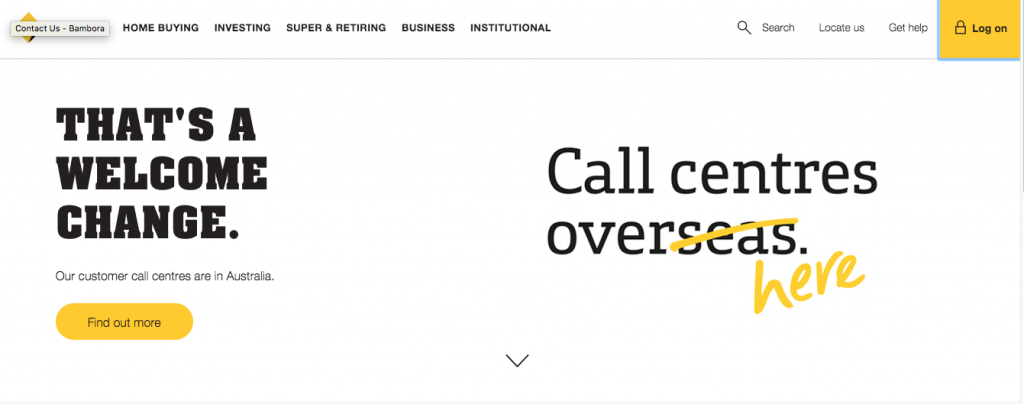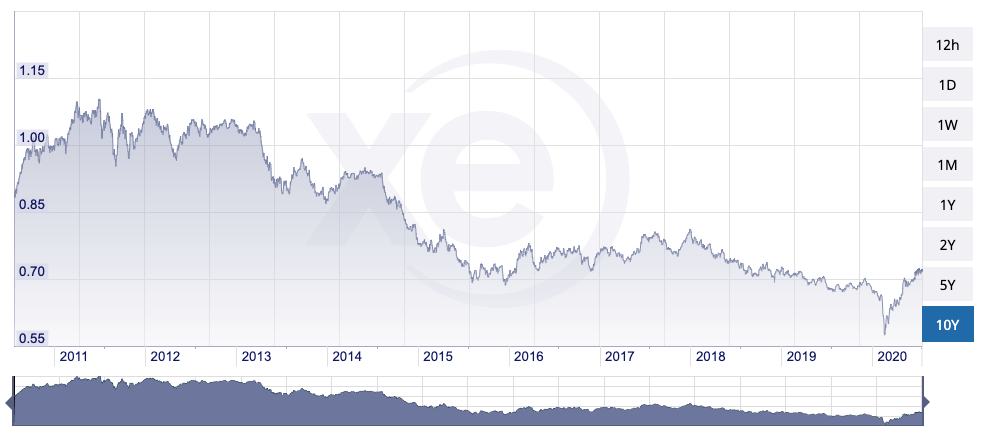
Does the overseas call centre location really matter?
Update: I originally wrote this article back in 2017 well before COVID emerged in late 2019. Obviously, COVID had a massive impact on businesses and for those who had already shifted 100% of their contact centres to overseas destinations like the Philippines, it was catastrophic.
They simply had no people, systems or locations to quickly move calls back to Australia and as a result, they were completely unable to service their customers.
Many of those companies including Telstra that I have referred to below have announced they are now shifting 100% of their call centre work back to Australia.
Whilst that’s great from a local perspective, I feel for our call centre friends in the Philippines.
But I’m not convinced it will be a permanent fixture.
The reality is there are significant cost savings in shifting call centres overseas and as companies start to look for ways to slash costs again, the temptation will still be there.
Let’s see who wins the battle – the accountants or the customer advocates within the business.
Why overseas call centres get a bad wrap
There has been a lot of discussion, views and opinions on the use of overseas call centres so it seemed like a fair question to ponder about whether customers actually care about the call centre location when they need support.
I was recently on the local current affairs TV show in Australia known as A Current Affairs (creative marketing in the name heh?) looking into the increasing number of businesses that are actively promoting their use of local (Australian) contact centres as opposed to offshore destinations like the Philippines.
The episode was prompted after the producer read one of my earlier articles on ‘Why Australian Call Centres are going offshore‘ and in particular, my comment that some businesses are now actively promoting the fact that their call centre is ‘Australian based’ as a competitive advantage.
In case you missed it, which if you are in Australia would have been difficult to do, the Commonwealth Bank ran an extensive marketing campaign that heavily promoted their Australian based call centres across all media (TV, radio, print, Billboards, Social).

So why did they do it?
Is the call centre location really that important?
For the customer, I don’t think it’s as important as we are lead to believe.
In my experience, customers who ring a call centre don’t want to wait long and they want to be able to communicate easily with the agent to get the help they need (you can read more about the impact on Customer Effort).
Do they care if the agent is in the Philippines? India? South Africa?
No.
It’s when through either language difficulties, poor phone lines and having robotic script-like conversations customers get frustrated about the inability to communicate easily – and that can happen right here in Australia as well.
For the business, however, the call centre location can and does have a large influence on a range of factors that I explain below.
Overseas call centre location influences
1. Costs
I personally don’t think the primary driver for anyone to send their call centre offshore is for a better customer experience.
With some offshore call centres in the vicinity of 60-70% cheaper than onshore, typically the driving motivation is to reduce costs.
With labour accounting for around 75%-80% of a call centre budget its a pretty simple equation that moving the call centre to a location with cheaper salaries is going to make a significant impact.
As of August 2020, the award rate for a call centre agent (Customer Contact Officer Level 1) in Australia is $42,562 but then there are penalty rates for shift work, overtime rates, Workcover, Sick leave, annual leave loading etc on top of costs for accommodation, technology etc which all adds up to a significant amount.
For easy comparison, a fully outsourced call centre agent in Australia will cost around $60 AUD per hour versus around $15 AUD in the Philippines.
Using a 50 seat call centre as an example that can equate to a saving of over $4.4M per year – a significant carrot for most businesses.
Now it’s not to say businesses don’t want to improve the customer experience, and by saving millions of dollars a year businesses can afford to invest more in being open longer, having more staff than they can otherwise afford, developing better products etc.
So sure you can mount a case for better service being the driver, but I’m yet to have a company contact me and say “Hey Justin I’ve been looking for ways we can offer a superior level of service to our customers so can you help us move our entire call centre operations to another country”.
It’s more along the lines of “Hey Justin I need to cut some costs out of the business, how can we do that without impacting the quality of service too much?”.
2. Language
Let’s be clear – just because a call centre is located overseas doesn’t automatically equate to a negative experience.
I’ve had some terrific call centre agents and experiences in the Philippines, South Africa and even from that far away exotic destination, New Zealand.
But on balance, speaking to someone from your own country who speaks the same language does have some benefits:
- It’s quicker and faster to communicate.
- You can use slang and still be understood.
- It’s easier to detect emotion (for both the call centre agent and you).
- You can build stronger rapport whether it’s some jokes over the local footy scores, the weather etc or perhaps an empathetic ear about some cultural or political issues. Typically better rapport leads to a better customer experience (see below).
3. Customer Experience
From my experience visiting call centres across the world, call centre agents work hard no matter what country they are in!
So if we accept the fact that not one country’s call centre agents are more productive than another and language barriers aside, the biggest frustration with offshore call centres in my experience is typically the low levels of empowerment the agents are given to resolve your issue.
The offshore call centre agents are often expected to perform with rigid scripts, restricted access to systems and often poor support and training in all of the companies products.
It’s like trying to hit a cricket ball with your hands tied behind your back!
How many times have you gone through an IVR (press 1 for this, 2 for that) where you are then asked to enter in your account details, date of birth etc only to end up in an offshore call centre where you are asked the exact same questions!
“Oh sorry sir we don’t have access to that information here” is a well-worn phrase.
It’s hardly the poor call centre workers fault but it’s a horrible way to start the conversation.
Just recently I had to call the local pay-TV provider for some support.
The after-hours support was handled offshore and the agent advised me that he was unable to help me because “I don’t have access to that system so you will need to call back tomorrow between 9 am and 5 pm and speak to a different team”.
Does that piss me off as a customer?
Absolutely!
Is it the agent’s fault? Not at all.
Sadly offshore call centre workers are often only taught a very small section of a companies products or services and are told exactly what to say and how to say it.
FAQ’s and system access are limited strictly to the items they support and to reduce the load on an onshore call centre or other channels, they are often not allowed to transfer customers to another team even when it’s clear they better placed to handle the enquiry.
So while our offshore friends might be fully conversant with a particular product or service, as soon as things go ‘off-script’ its normally when things start going downhill.
Of course, customers don’t (and shouldn’t) need to stick to a script and only ask about one product or service.
And that’s the risk with managing the customer experience – the agent and the associated systems and processes need to be flexible and seamless for the customer regardless of the location or channel.
I honestly think that if the customer experience was designed better and agents were fully empowered to help customers, then it really shouldn’t matter where the call is answered and there would be a lot fewer people frustrated with the offshore call centre experience!
4. Sustainability
As third world countries evolve and start investing more in infrastructure and more and more people move into ‘middle class’ the once cheap labour rates will start to increase.
We experienced it in India and already in the Philippines (who service the USA more than Australia for the record) competition for elite call centre talent continues to drive up wages in the high population cities.
This is forcing outsourcers and larger call centres to move further out to access more talent with less competition but naturally, over time this gets harder and harder to do.
Throw in the value of the Aussie dollar fluctuating and political instability in some countries and there are obviously a lot of moving parts that can make the commercial proposition and risk of offshoring increasingly difficult to forecast.

So who are the companies with 100% Australian call centres?
As I mentioned earlier we’ve started to see companies now actively promote their ‘Australian based’ call centre as a point of difference in a competitive marketplace.
Commonwealth Bank, AMP, Red Energy and Aussie Broadband are just a few of the companies that come to mind.
For readers who have been following me for a while, you’d remember that years ago I had a list on this website that identified where the call centres were located for specific businesses.
Hopefully, in late 2021 I’ll be launching a website that will provide consumers with a resource to search by company name or by industry type to find out where businesses have their call centres.
I’ve built most of it, but there are just never enough hours in the day!
What the stats say
We all have some personal opinions on this and for some on-shoring versus offshoring is a highly emotive topic so let’s take a look at some recent statistics:
- The cost to outsource to the Philippines has increased 30% over the past 5 years due to the exchange rates of AUD to USD although the 2020 trend leads to a strengthening AUD making the Philipinnes cheaper.
- A customer is 4 times more likely to go to your competitor if their problem is service-related than price or product-related. (Bain & Company)
- By the year 2020, customer experience will overtake price and product as the key brand differentiator. (Customers 2020 Report)
- Love your new customers, but never forget to appreciate your old clients as well: it’s 7x more expensive to get a new customer than to retain an existing one. (Invesp)
- 70% of complaining customers will do business with you again if you resolve the complaint in their favour. (Lee Resource Inc)
- In the latest Australian Contact Centre industry report, the Philippines as an on-shore location has reduced from 30% in 2014 to 19% in 2018
- Contact centres that outsourcing some contact centre functionality is on the rise – from 22% in 2014 to 24% in 2018
- 78% of organisations that outsource do so on-shore.
The impact of digitisation
It would be remiss of me to not talk about the impact digitisation is having on the call centre industry in general.
There is no question that call volumes are declining as customers are provided with ways to self-service through chatbots, AI etc and through a better focus on CX, companies are also reducing the need for support in the first place (Jeff Bethos is famous for saying ‘the best service is no service’).
In August 2020, Telstra announced that their intention is to reduce the number of calls to their call centres by two-thirds.
This coincided with the decision to bring all their overseas call centre work back to Australia as they will need a smaller workforce to answer the reduced call volumes and they acknowledge the overseas call centre experience hasn’t always been great for their customers.
I expect this is a trend other companies will follow and as an industry, reduced call volumes will continue to occur leaving fewer, but more complex calls left to manage.
Summary
By now you’ve probably realised the decision to send your call centre work to an overseas call centre is not an easy one and there is certainly no ‘one size fits all’.
If there are significant savings to be made and this enables your business to provide better service (because you can handle more volumes or offer extended hours) or you can pass on those cost savings in the form of lower prices to customers then you’d be crazy not to look at it.
And for some customers, having a cheaper product or service is worth the inconvenience of some potential language challenges or a lower quality of customer service.
Bunnings and Aldi are just two of many examples where low prices over great service is a strategy that can work.
There is no doubt however that for most businesses, the customer experience is the new battleground for the customer dollar so whichever way you go, make sure you invest in getting the customer experience right.
But just remember, just because its an overseas call centre is never an excuse for a poor customer experience.
As always I look forward to your views.
Recommended further reading: An honest insight into how businesses decide on outsourcing offshore
Looking for a list of overseas call centres/BPOs who can handle work from Australia?
- Philippines
- South Africa
- Fiji
- New Zealand
- India
- Want to keep things local? Search Australian BPOs>

